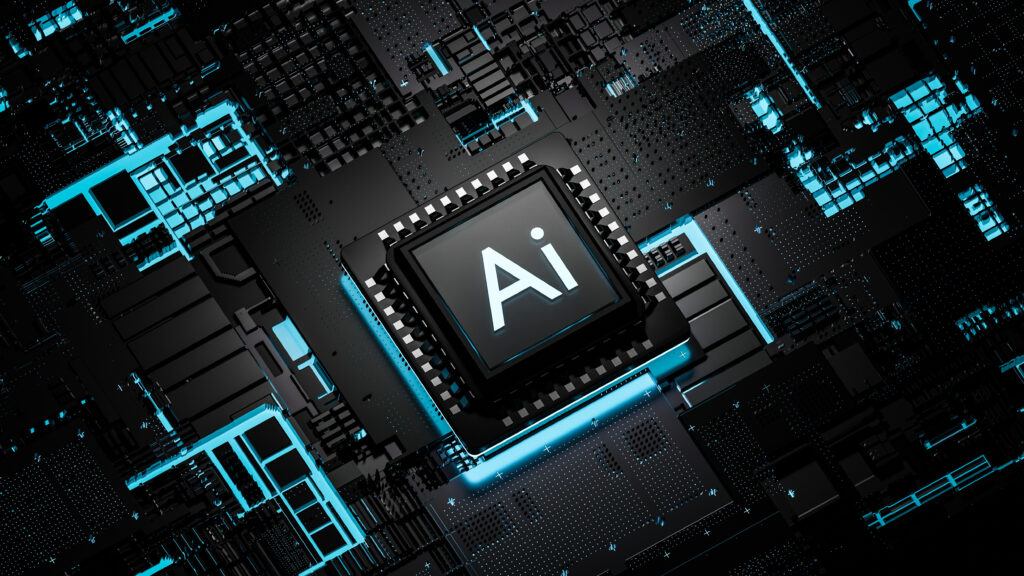In the fast-paced world of artificial intelligence, the race for ever more powerful AI hardware is constantly accelerating. Now, more tech professionals are grasping the importance of state-of-the-art silicon for training advanced neural networks. With each generation, AI chips take a great leap forward. NVIDIA aims to continue this trend, unveiling its roadmap through 2026. The upcoming Blackwell and Rubin chips promise previously unimaginable AI performance, tightly integrating cutting-edge CPUs and networking. In this article, we will explore these next-generation AI accelerators and ponder the implications of NVIDIA’s rapid cadence of innovation. What might these new chips enable in 2025 and beyond? Read on for an in-depth look at the AI chips of tomorrow.
The Evolution of AI Chips
Increasing Processing Power
- As AI models have become more complex, the chips that power them have had to evolve rapidly to keep up. Early AI systems were powered by standard GPUs. However, the massive datasets and compute-intensive training of modern neural networks have necessitated a new generation of dedicated AI chips. Companies like NVIDIA, Google, and Graphcore have released specialized AI accelerators. They are composed of thousands of small processing cores optimized for the matrix multiplications at the heart of machine learning.
Integrating Memory and Processing
- The earliest AI chips simply provided raw processing power, but transferring data on and off the chip creates bottlenecks. Newer designs integrate high-bandwidth memory directly into the chip package, allowing data to be accessed more quickly. Some companies are experimenting with in-memory computing, performing operations directly on data stored in memory. These tight integrations of memory and processing minimize data transfer and speed up complex AI workloads.
Looking to the Future
- NVIDIA’s announcements indicate the future direction of AI chips. As models become more sophisticated, chips will need to provide higher performance, integrate additional components like networking and general-purpose CPUs, and optimize for new machine-learning techniques. Future AI chips may also become more specialized, with different architectures targeted at training vs. inference or tuned for applications like natural language processing or computer vision. Continued progress in AI will depend on hardware that is purpose-built for the demands of artificial neural networks and their evolving architectures. With companies investing heavily in this space, the future of AI chips looks promising.
Introducing NVIDIA‘s Next-Gen AI Chips: Blackwell and Rubin
Blackwell Ultra
- NVIDIA’s Blackwell Ultra chip, set for release in 2025, will provide a major upgrade to the company’s AI accelerators. Featuring the latest architecture and transistors, Blackwell Ultra will offer up to 20 times the performance of today’s graphics processing units (GPUs) for artificial intelligence (AI) applications like natural language processing, computer vision, and recommendation systems.
Advanced Networking and CPU Capabilities
- The Rubin chip, slated for 2026, builds upon the Blackwell architecture but also integrates networking and central processing unit (CPU) features, enabling Rubin to become a more well-rounded accelerator for autonomous machines. Rubin will handle complex AI models along with control, monitoring, and communication functions, reducing the need for additional components.
A Roadmap for Continued Innovation
- By providing a roadmap for its next-generation AI chips, NVIDIA is signaling its commitment to regular, rapid advancement of its accelerators. The annual upgrades to Blackwell and Rubin will incorporate the latest technologies to drive performance, efficiency, and capabilities far beyond today’s levels.
- For companies developing AI systems and software, NVIDIA’s roadmap provides visibility into the future performance and features they can expect from the hardware. This can help in planning and designing AI applications that will take full advantage of the next-generation chips as they become available. By releasing technical specifications for Blackwell Ultra and Rubin well in advance of their launch dates, NVIDIA is also allowing plenty of lead time for software developers to optimize their tools and models for the new accelerators.
Overall, NVIDIA’s newly announced product roadmap demonstrates the company’s sustained focus on innovation and its goal of providing world-class accelerators to power artificial intelligence. With Blackwell Ultra and Rubin on the horizon, AI is poised to become far more powerful, ubiquitous, and capable.
Key Features of the New Chips

The Blackwell Ultra and Rubin chips will provide significant performance improvements over current AI accelerators.
Advanced Architecture
- The chips feature an advanced multi-die architecture that integrates an array of components into a single package. This includes next-generation tensor cores for AI processing, high-bandwidth memory, networking, and an ARM-based CPU. The tight integration of these components enables high-speed data exchange and power efficiency.
Enhanced AI Capabilities
- The new tensor cores provide up to 2.5 times the throughput of current models for tasks like natural language processing, computer vision, and recommendation systems. This will enable AI models with over 100 trillion parameters to be trained in days instead of weeks. The chips also include sparse computation capabilities to handle sparse AI models more efficiently.
Integrated Networking and CPUs
- Unlike current AI accelerators that rely on separate networking and CPU chips, the new chips incorporate high-speed networking and ARM CPUs. The networking provides up to 5 Tbps of bandwidth, enabling high-speed communication between chips. The CPUs handle control plane processing, freeing up the tensor cores for AI workloads. This integrated design reduces latency and improves energy efficiency.
Software and Deployment Optimizations
- NVIDIA has optimized its AI software stack, libraries, and frameworks to take full advantage of the new chips’ capabilities. This includes optimizations for large language models, computer vision, and recommendation systems. NVIDIA and its OEM partners will also provide optimized system designs for efficient deployment in data centers and edge environments.
The Blackwell Ultra and Rubin chips signify a new generation of AI accelerators that provide the computational capacity, efficiency, and turnkey software and hardware solutions needed to expand AI’s impact. With annual upgrades planned, NVIDIA aims to drive continued progress in AI with faster, more powerful, and more efficient processors.
The Future of AI Acceleration
Annual Upgrades for Continued Progress
- NVIDIA’s announcement of annual upgrades to their AI accelerators signals an exciting future for the field of artificial intelligence. Releasing improved chips each year will allow for consistent progress in AI capabilities and performance. The Blackwell Ultra chip in 2025 and the Rubin chip in 2026 promise advanced networking and CPU features that will expand the potential uses of AI.
Powering New AI Applications
- With greater processing power and speed comes the ability to power more complex AI systems and applications. Things like intelligent robotics, autonomous vehicles, and AI that generate synthetic media may become mainstream as chips like Ultra and Rubin enable the advanced computing required for such technologies. AI which was once theoretical or limited to research labs could find its way into commercial and industrial use.
Collaboration Across Fields
- Advancements in AI chips could also drive collaboration with other fields, like quantum computing. Combining quantum computing’s ability to solve complex problems that are intractable for classical computers with powerful AI acceleration could open up possibilities for systems with human-level intelligence. While still largely speculative, partnerships between tech giants like NVIDIA and Google’s Quantum AI team hint at the potential for fusion between these promising but nascent technologies.
Responsible Innovation
- With progress comes responsibility. More powerful AI demands careful management and oversight to ensure its safe, fair, and ethical development and use. NVIDIA and others must make AI safety and “responsible innovation” priorities as chips like Ultra and Rubin make advanced AI more ubiquitous and autonomous systems more capable. Close collaboration with researchers in fields like machine ethics will be essential to maximizing the benefits of new AI accelerators while minimizing the risks.
The future of AI acceleration looks bright, but it must be balanced with responsibility. Overall, NVIDIA’s roadmap for increasingly sophisticated chips signals a new phase of progress for artificial intelligence, one that could transform both the commercial landscape as well as our everyday lives. Powered by annual upgrades, the future of AI looks both promising and challenging. Continued progress will depend on innovation that is as responsible and thoughtful as it is fast and powerful.
Next-Generation AI Chips FAQs
What are NVIDIA’s plans for AI chips?
- NVIDIA announced ambitious plans to release upgraded AI accelerators on an annual basis to keep up with the rapid progress in AI. The Blackwell Ultra chip will launch in 2025, followed by the Rubin chip in 2026. These next-generation chips will provide advanced networking and central processing unit (CPU) capabilities in addition to the graphics processing unit (GPU) functionality found in current NVIDIA chips.
What new capabilities will the chips offer?
- The Blackwell Ultra and Rubin chips will enable AI systems to become far more sophisticated. The chips will provide faster processing speeds, higher bandwidth, and more memory to handle the huge datasets required for cutting-edge AI techniques like deep learning. They will also allow AI systems to collaborate and share information more efficiently through enhanced networking features. With these chips, NVIDIA aims to give AI systems human-level intelligence in areas such as natural language understanding, complex problem solving, and common sense reasoning.
How will the new chips impact AI’s progress?
- NVIDIA’s accelerated roadmap for releasing upgraded AI chips signals that progress in AI is moving at an unprecedented pace. Each new generation of chips unlocks new capabilities that build upon the previous generation, enabling AI systems to become far more advanced within a short span of time. The Blackwell Ultra and Rubin chips will provide the processing power and connectivity for AI to achieve new breakthroughs, particularly in artificial general intelligence. However, concerns have been raised about the responsible development of increasingly sophisticated AI. Close collaboration between technology companies, researchers, and policymakers will be needed to ensure the safe and ethical progress of AI.
In summary, NVIDIA’s plans to release the Blackwell Ultra chip in 2025 and the Rubin chip in 2026 demonstrate the company’s commitment to driving rapid progress in AI technology. The new chips will give AI systems advanced capabilities such as faster processing, enhanced networking, and human-level intelligence in select areas. With close cooperation across stakeholders, these chips could enable AI to achieve major breakthroughs, but they also highlight the need to consider AI safety and ethics. By upgrading its AI accelerators annually, NVIDIA aims to maintain its leadership in powering the future of AI.
To Sum It All Up
Looking ahead, the future appears bright for advances in AI hardware. With industry leaders like NVIDIA paving the way by unveiling ambitious roadmaps and next-generation chip designs annually, rapid innovation seems inevitable. Their plans to integrate advanced features into future accelerators should push the performance boundaries even further. While the full capabilities of chips like Blackwell Ultra and Rubin remain to be seen, these upcoming launches signal that the AI chip landscape will continue evolving at a breakneck pace. The ripple effects for AI practitioners and end users could be immense, as more powerful hardware unlocks new possibilities. Perhaps most importantly, these leaps forward keep us moving steadily toward the grand goal of fully realizing AI’s immense potential across countless industries and applications.
More Stories
Samsung’s AI Power Play: Perplexity Partnership Signals Shift from Google
Samsung is poised to redefine AI in its Galaxy smartphones through a bold strategic move. It has partnered with Perplexity AI, an innovative U.S.-based startup. This signals a possible shift away from Google’s AI ecosystem. As a result, Samsung may integrate Perplexity’s advanced assistant into its devices.
DeepSeek R1-0528 Powers Open-Source AI Challenge to OpenAI and Google
In the fast-changing world of artificial intelligence, DeepSeek's new model, DeepSeek-R1-0528, stands out as a strong competitor. It challenges major...
EastWest Bank Embraces Temenos SaaS to Propel Digital Transformation
EastWest Bank leads digital transformation in financial services through its new partnership with Temenos. The collaboration uses Temenos’ advanced Software-as-a-Service (SaaS) solution.
Apex Group Taps Tom Bennett to Spearhead Global Fintech Strategy
Apex Group Ltd. has strategically appointed Tom Bennett as Global Head of Fintech. This pivotal role highlights Apex Group’s commitment to advancing its digital capabilities across private markets, capital markets, and digital assets.
Operator 2.0: OpenAI’s o3 Model Elevates Autonomous AI Agents
OpenAI’s latest advancement marks a new milestone with the introduction of Operator 2.0, powered by the cutting-edge o3 model
AI Arms Race Escalates as OpenAI Locks Jony Ive for Next-Gen Hardware
OpenAI has formed a groundbreaking collaboration with Jony Ive, the visionary designer behind Apple’s most iconic products.


